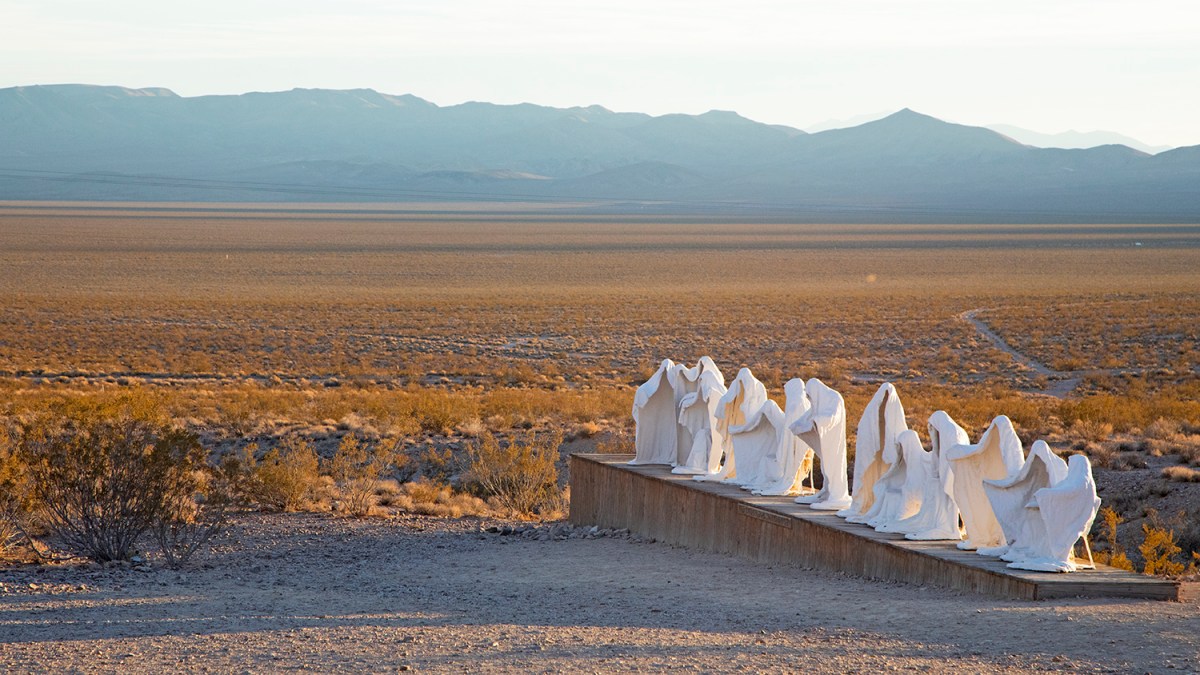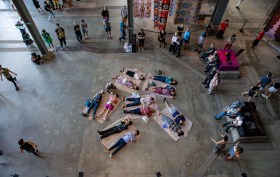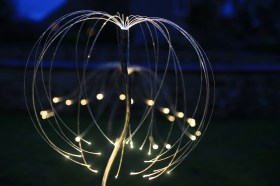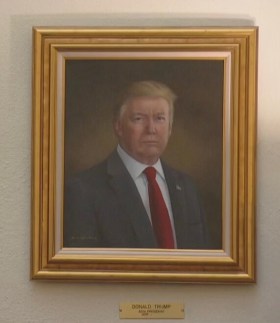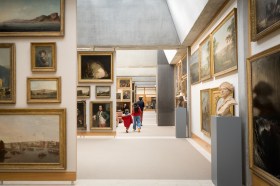More like a rite of passage for Nevadians, the Burning Man festival has fuelled a generation of “Burners” who spend each year getting ready for the fun, while the artists, also “Burners” spend their year making art. The works are huge and robust, often made of scrap steel, car parts or as container experiences.
In Reno, the Neon Line project and surrounding area is alive with art. Jeff Jacobs, J Resort’s Chairman and CEO, has filled J Resort with work by Alex Katz, Robert Indiana, Alexander Calder and Robert Motherwell. But he has also brought the street alive with huge digital screens and some very large-scale sculptures all displayed on the street.
Read: The Burner effect part one – Nevada murals
The sculptures are mostly ex Burning Man and created at The Generator, a not-for-profit workspace of 185,000 square metres just east of Reno. The line-up is fun with a huge 10-metre tall white bear, Longview the polar bear, by Don Kennell and Lisa Adler, 2018 made from recycled car hoods. Andrea Greenlees, Andy Tibbets and Josh Haywood’s Bee Dance of 2019 is another street favourite, as is the perpetually changing colour explosion of Squared by Charles A Gadeken.

Michael Christian’s Sprouts 2022, was commissioned for the project, but Australian artist and “Burner” Clayton Blake’s silver rocket Odyssey, with its 1960s sci-fi design, most charmingly captures the imagination. As local mural artist Hayley Meadows explains, ‘There isn’t really any need for security, everyone respects the work’, with a small fence creating an enclosed area for some, while the rest are open to the public and elements.
Thirty minutes south of Reno on the I-580 is the Nevada state capital Carson City where the truly fabulous Eric Brooks tells ArtsHub that both mural art and public sculptures are, interestingly, hosted by private residents, as it’s so much easier than applying for city permits.
Goldfield is the next stop with the International Car Forest of the Last Church. You can drive right up to the first plateau and get a good overview before stepping out and walking around this stranger than strange installation by Mark Rippie, the owner of the local junk yard, whose vision was to break the Guinness World Record for the world’s biggest car forest.
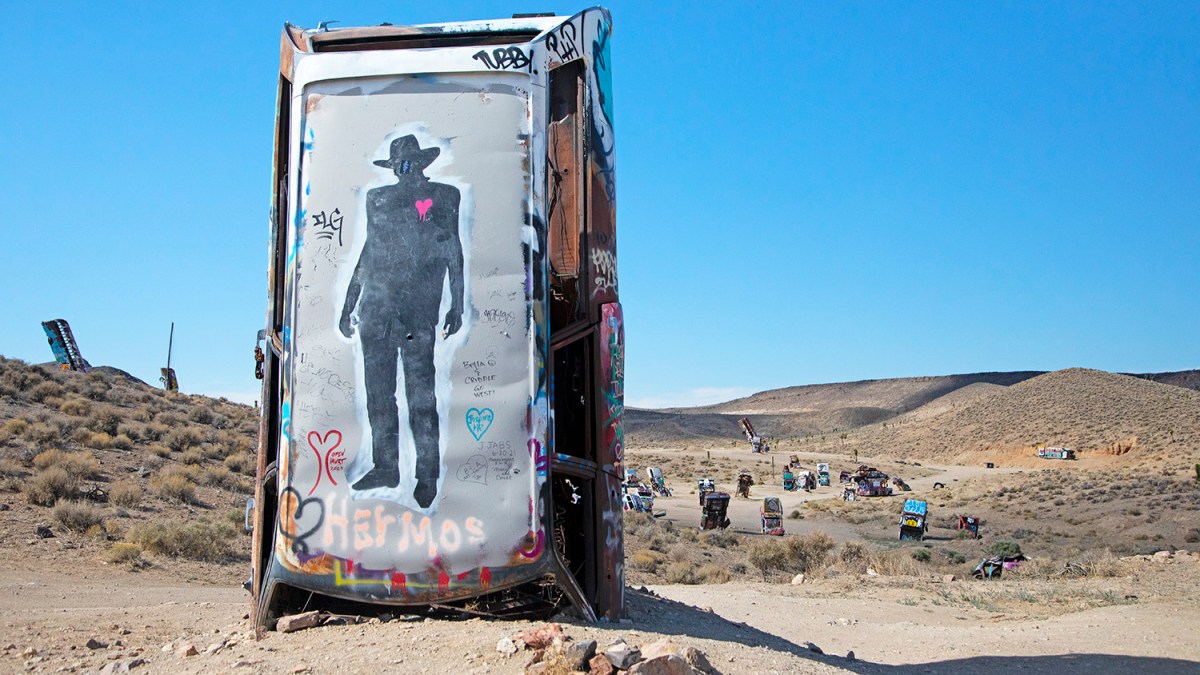
With artist Chad Sorg, who painted the original iteration (many unnamed artists have since contributed) and with the car arranging assistance of Zak Sargent, the more than 40 cars, buses, vans and car bits are arranged in stacks or at unnatural angles with noses buried deep in the dirt. As the project ages, graffiti is added to the colour cacophony, but this is as it should be with Rippie adamant that the project be shared.
Just down the highway is Goldwell Open Air Museum where the 1984 founding work by Albert Szukalski, The Last Supper, is the big ticket. Weather resistant to a large degree, the work has only needed a bit of refreshing over the years. What has needed repair is the timber plinth, which this year will be replaced by concrete. This year will also see The Pink Lady, 1991 by Dr Hugo Heyrman get a fresh lick of paint. ‘We’ve got funding and an all-female volunteer team to bring her back to full colour,’ says artist Michelle Graves of the washed-out block statue, which will be vibrant again soon.
Read: Gifting awareness: We Were Lost in Our Country
Not really part of the museum, but just up the road is Rhyolite Ghost Town. It’s an odd mix of the might of American pioneering ambition with huge buildings now reduced to street façades and wings, and the gorgeously quirky Tom Kelly’s Bottle House. Zipping from 5000 residents in 1904 to zero by 1907, the town is now a quick stop with a toilet but no food outlet, which seems remiss with a steady flow of visitors. Kelly’s Bottle House is one of the last of its kind and it’s a neat discovery to learn that the builder, Kelly himself, a stone mason turned gold miner, was in fact Australian.
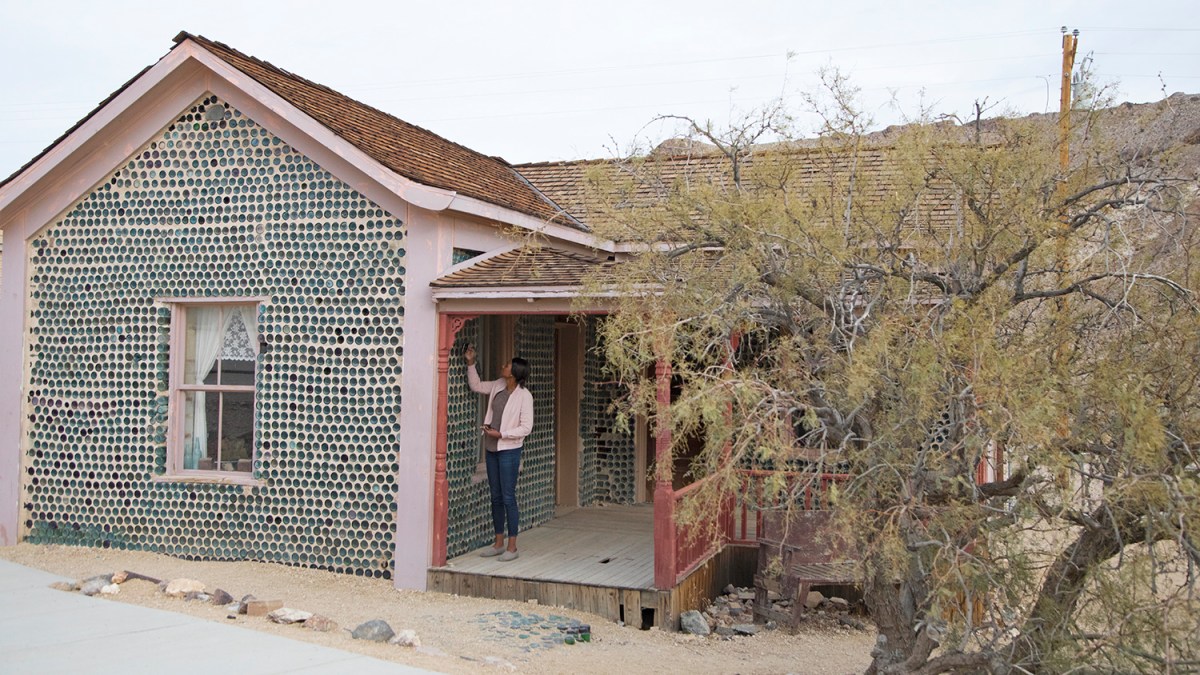
The crowning glory of the Nevada Art Trail is the Seven Magic Mountains, by Swiss artist Ugo Rondinone. The artist, now located in Harlem New York, is no stranger to large installations and his rainbow lettered Our Magic Hour, 2003, Kaldor Public Art Project 13, was in place atop the MCA in Sydney until 2009, before moving to Cremorne in Melbourne where it now sits on the top of the Sportsgirl building.
Carmen Beals, the Nevada Museum of Art, Curator and Outreach Director overseeing the site tells ArtsHub that graffiti and tagging have also never been an issue with this site. However, while the whole work is repainted annually to combat sun fade, the constant wear of hands rubbing against the stones, necessitates repainting the lower stones regularly. Interestingly, she explains that the colour preference for photography has fashion shifts.

‘A lot of people are attracted to the reddish orange,’ she says. ‘It was the purple one when the installation first opened, and then it was the yellows.’
From the Burning Man festival in Nevada to world biennales, the way audiences appreciate and revere public art is being shaped with fabulous results and a great respect for both the art and artists of these magical public works.
While in Nevada the author was the guest of Travel Nevada. To experience the public art of Nevada, start planning your Nevada trip at Travel Nevada.
